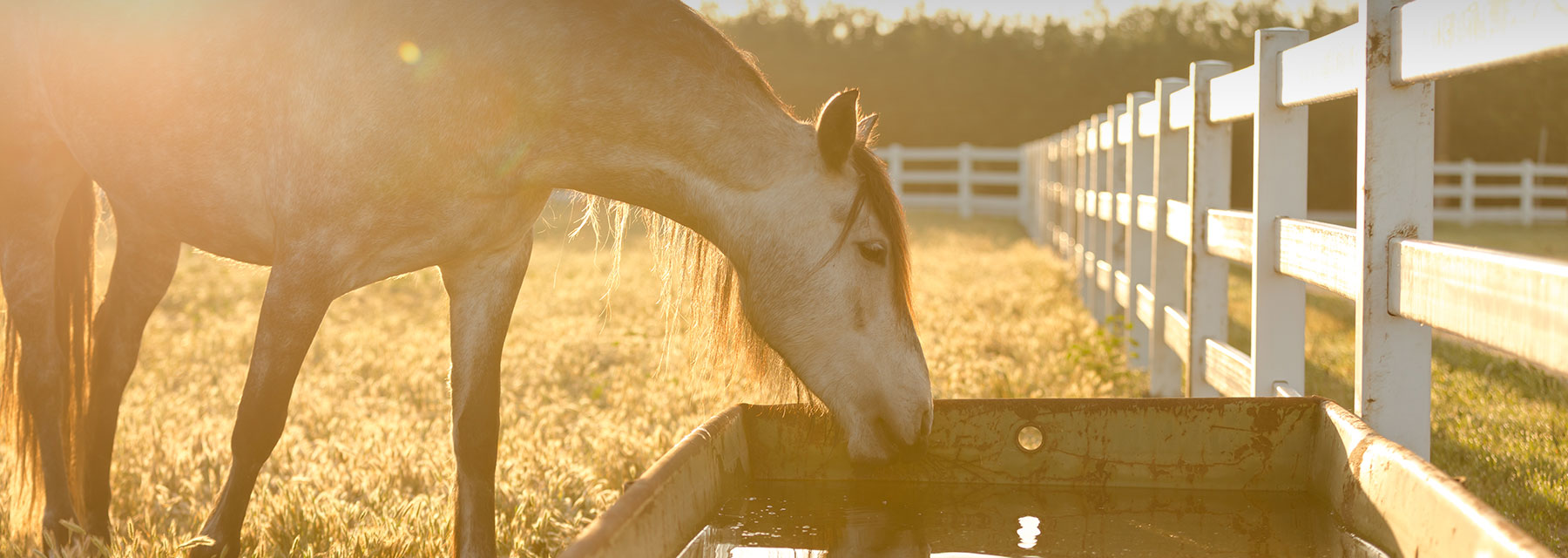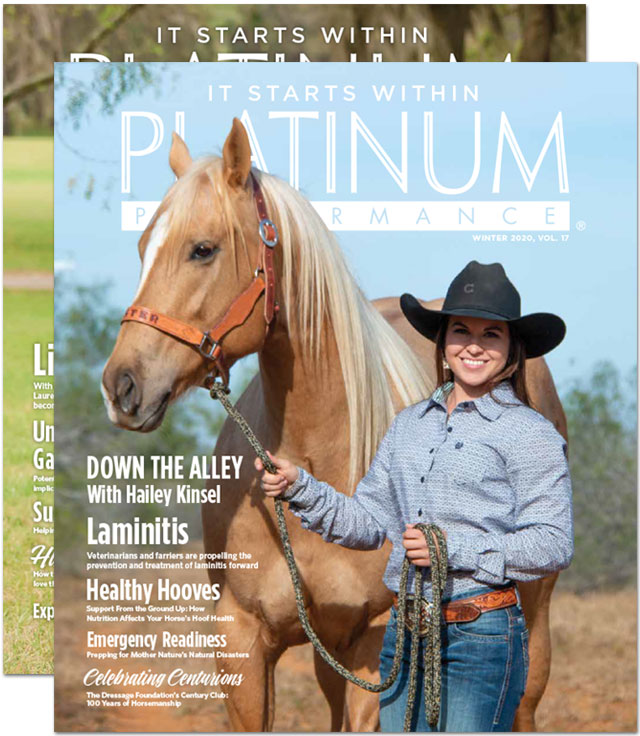
It's Getting Hot Out There
The hottest season of the year is finally upon us, and horse owners everywhere are celebrating the longer days and warmer temperatures that call for more time spent at the barn. But before we saddle up, let's make sure we have everything we need to help our horses beat the heat.
Must-Haves to Support Your Horse This Summer
Water
Hydration is key to keeping your horse healthy this summer. About two-thirds of a horse's body weight is fluids. In mild temperatures, around 68 degrees Fahrenheit, a horse will drink 5 to 10 gallons of water per day. However, when temperatures increase, that amount will easily double or triple. Having fresh, clean water available at all times is critical to your horse's health and well-being.
Shade
Horses need shade just like riders do to remain cool in the scorching heat. Trees, a shade cloth, a barn or other shelters help to decrease ambient temperatures up to 10 degrees. Some horses can be particularly prone to sun exposure issues whether because of light-colored or sensitive skin, or headshaking. These animals might be more comfortable with night turnout and completely avoiding direct sunlight.
Fresh Air
Stale, musty air provides no relief from the heat, and it can also attract more flies. Whether your horse is in the barn or a trailer, encourage airflow by opening up doors and windows as much as possible. Outdoor-use or agricultural fans are also a great way to safely move air around and offer a cool breeze for your horse.
Electrolytes
Additional electrolytes may be needed for your horse during extreme temperatures or heavy exercise to replace the minerals lost through sweat. Salt should be the primary ingredient in any electrolyte supplement, making up at least 75 percent of the total volume in the mixture. Be sure to check the labels and avoid added sugar as well.
Insect Control
Flies and other insects are an increased irritation in the summer months. Flysheets, masks and sprays can provide relief. Cleaning stalls regularly and storing manure far away from horses also decreases the number of flies. For especially itchy horses, supplementing with omega-3 fatty acids, quercetin and thymic extract can support horses experiencing seasonal allergies.
Supplement
Stresses from the heat and traveling to summer events can be hard on a horse's immune system. Make sure your horse receives a comprehensive wellness formula like Platinum Performance® GI, which provides a GI-focused approach to total body health and immunity. You may also consider adding zinc and lysine during travel to provide support in the event your horse has any type of viral exposure.
Special Considerations
Dealing with Anhidrosis - Sweating is a horse's natural cooling system. Some horses suffer from anhidrosis, which is an inability to sweat normally. “Non-sweaters” require additional maintenance to cool off, such as increased shade, fans, misters and regular baths to cool off. Adding electrolytes can help support healthy hydration. Adding the amino acid arginine and B vitamins like those found in Platinum Refresh, can help support normal sweating.
Sun Protection - Horses with pink noses, bald faces and white socks may be more prone to sunburns. Protect these horses by covering their sensitive areas with fly masks that offer UV protection or by applying sunblock. Look for human sunscreen that doesn't contain para-aminobenzoic acid, or PABA, for safe protection.
How Do I Know if My Horse is Dehydrated?
Dehydration is a warning sign for multiple serious conditions, including colic and heat stroke. Watch for signs that your horse may not be drinking enough water in order to address the problem before it becomes a more severe issue.
Monitor Water Intake
Although automatic watering devices offer a convenient way for horse owners to make sure their horses always have water, they do not keep track of how much water your horse drinks. If you have concerns that your horse is not drinking, turn off the automatic waterer and chart how much water your horse consumes.
Gum and Capillary Refill Test
A hydrated horse's gums are moist and pink. When a finger is pressed firmly against them, then released, the point of pressure should return to a pink color within 2 seconds. If you have never done this test, try it while you know your horse is hydrated to see what normal and healthy gums look like.
The Pinch Test
One hydration test involves checking for skin elasticity. When you pinch and release the skin on your horse's neck, it will quickly return to normal on a hydrated horse. However, if the animal is dehydrated, it will form a wrinkle when pinched that can take up to 5 seconds to disappear. Again, if you have never tried this, do it on a fully hydrated horse first, so you understand what is typically expected.
Consistency of Manure
Examining manure can tell you a lot about what's going on inside your horse's gut. Very dry or hard manure can be a sign of dehydration and/or impaction. Make a mental note of what your horse's normal manure looks like when cleaning stalls or riding, so you can tell when something is not right or there has been a deviation from that horse's “normal.”
It is important that you contact your veterinarian if you think your horse is showing any signs of dehydration as it could be a sign of something serious.
Encouraging Healthy Hydration While Traveling
We've all heard the saying, “You can lead a horse to water, but you can't make him drink.” However, what if you could get him to consume more water?
Simple suggestions that promote healthy summer hydration:
Bring Your Own Water
Oftentimes, water in new places has a different smell or unfamiliar taste that some horses don't like. Bringing water from home can make drinking more about thirst and less about taste. Empty Platinum buckets also make great storage containers for water in the trailer.
Have Salt Readily Aailable
Make sure your horse always has salt available to encourage drinking. While white salt blocks are most commonly used, offering loose salt, electrolytes or spraying feed down with salt water are options. Horses need about an ounce (2 tablespoons) of salt per day in cool weather. This amount can be easily doubled in hot and humid climates.
Wet Feed Down
Not only does spraying down your hay or feed with water help to decrease dust in the air, it also increases water consumption and adds moisture to your horse's gut. However, avoid mold by making sure the wet feed or hay doesn't sit too long.
Change Water Often
Fresh, clean and cool water is always more inviting. Small buckets of water can heat up quickly when left out in the sun, so be sure to dump them regularly and refill with fresh water.
Keep Your Horse Cool While Riding
Heat stress and heat stroke are always a risk when riding during the hot summer months. Consider these tips to keeping your horse cool when you ride:
Time of Day
Keep in mind the hottest part of the day is between 2 and 5 pm, as heat continues to increase after noon when the sun is at its highest point. Consider adjusting your routine, so you can trailer your horse and ride during the cooler parts of the day.
Cooling Off
Your horse will need considerably longer to cool off under the scorching sun. Make sure to walk your horse out until his breathing is back to normal and his sweat is dissipating.
Workload
If you have to ride in the heat, make sure not to overwork your horse. The amount of work you can do in 100 degrees Fahrenheit is going to be much less compared to 65 degrees. Walk often, take plenty of breaks in the shade and offer your horse water every 30 minutes.
A Refreshing Bath
A nice bath after a long, hot ride is a great reward for a horse. This will help to rinse off sweat, so it doesn't cause irritation, and the water will help bring down your horse's core body temperature. For very hot horses, use cool water to continually rinse until the horse's body temperature is cooled down back to normal, between 99 to 101 degrees F.
99-101° F
Temperature to return a horse's body to post ride with cool water
Humidity Prevents Sweat From Evaporating Efficiently
Temperature alone doesn't tell the whole story on how hot it feels outside. Humidity, the amount of water vapor in the air, plays a significant role in the climate. When the weather is hot and humid, horses struggle to stay cool because they are unable to use their body's cooling mechanism. Releasing heat into the air as sweat is more complicated when there is a high amount of water already present in the air.
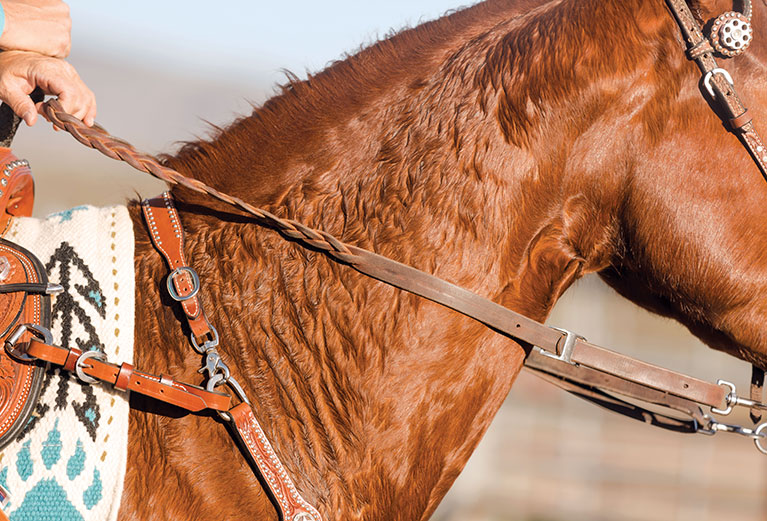
What You Can Do To Help
Always be aware of the heat index, a measurement used to keep track of temperature and humidity. To calculate the heat index, add the temperature (degrees Fahrenheit) with the percent humidity. For example, if it's 90 degrees with 70 percent humidity, then the heat index is 160. When it is over 150, horses struggle to cool off and should be worked less, offered plenty of water and rinsed with water repeatedly until their body temperature cools down to normal. An index exceeding 180 can make it unsafe to ride, and horses should be monitored closely for signs of heat stress or worse, heat stroke.
Temperature + Humidity = Heat Index
> 150
With a heat index over 150, horses struggle to cool off and should be worked less.
> 180
It could be unsafe to ride. Horses should be closely monitored for signs of heat stress or heat stroke.

by Lindsey Stornetta,
Platinum Performance®
You May Also Like
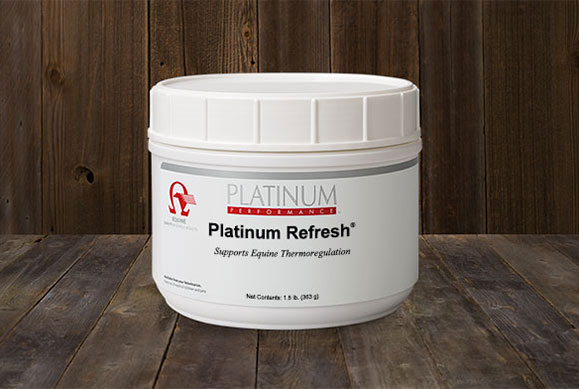
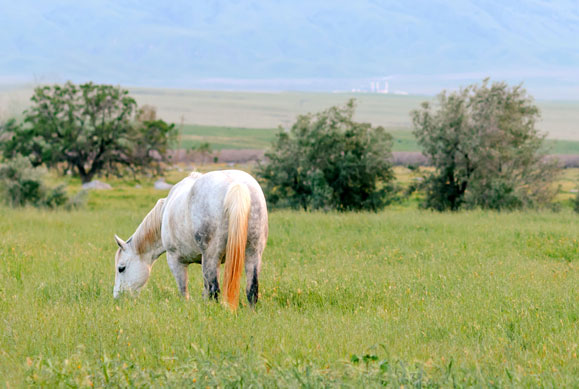
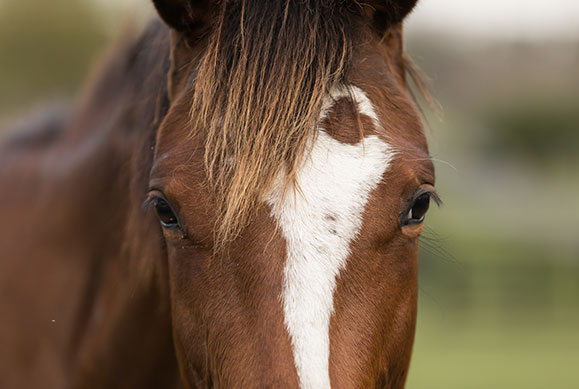
Headshaking in Horses
A closer look at Trigeminal Mediated Headshaking, recent advancements and practical advice for management
Read Moreabout Headshaking in Horses